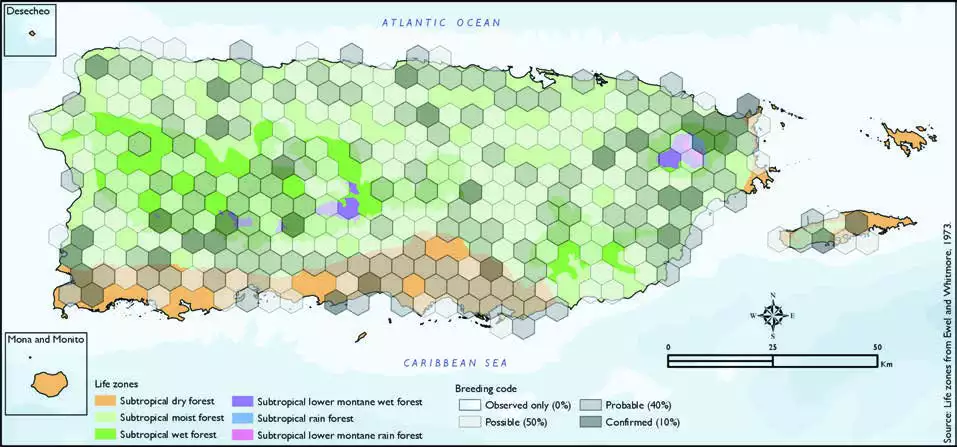Yellow-faced Grassquit
Description
The yellow-faced grassquit (Tiaris olivaceus) is a passerine bird in the tanager family Thraupidae and is the only member of the genus Tiaris. It is native to the Central America, South America, and the Caribbean.
It is a small bird with a conical bill, sharper than that of the related seedeaters. It is 10–10.7 cm (3.9–4.2 in) long and weighs about 8–10 g (0.28–0.35 oz), depending on subspecies. The adult male has an olive-green back, and its face and breast are black apart from a bright yellow throat, supercilia, and lower eyelid spot. The rest of the underparts are greyish olive. The beak and eyes are dark, the legs are grey.[11][12][13]
Distribution & Habitat
The Yellow-faced Grassquit occurs from Mexico to
northwestern South America,
and it is a common resident
throughout the Greater Antilles
and the Cayman Islands in the Caribbean (Raffaele and
others 1998). In Puerto Rico, it
is found throughout the main
island but occurs mostly in the
municipalities of Humacao and
Fajardo at the eastern region
(Biaggi 1997). It also occurs
sporadically in El Yunque
National Forest and near El
Verde field station along grassy
roadsides (Recher and Recher
1966). In addition, it has also
been reported from Culebra
(Bond 1961, Wetmore 1917)
and Vieques islands (Bond
1961, Saliva 1994, Sorrié 1975,
Wetmore 1916), in the latter
being an uncommon resident
(Gemmill 2015). The species usually inhabits open grassy
areas from the lowlands into
the high mountains (Raffaele
and others 1998), as well as
marshy areas, open brushy
fields, and roadsides with tall
grasses (Oberle 2018). The atlas
fieldwork yielded a total of 532
records within 316 hexagons
or 66 percent of the 479 total
hexagons (see map). Of the 316
hexagons where this species
was found, breeding met the
atlas definition of confirmed in
10 percent (33) of the hexagons,
probable in 40 percent (125),
and possible in 50 percent (158)
(see map). Yellow-faced Grassquit distribution. The map shows the highest breeding code by hexagon and overlaying the ecological life zones
in Puerto Rico. Note: percentages may not total 100 due to rounding. 283Yellow-faced Grassquit/Gorrión Barba Amarilla

Breeding Habits
Previously published reports indicate that the Yellow-faced
Grassquit breeds throughout the
year (Raffaele and others 1998)
but primarily during February,
March, and April (Biaggi 1997).
The nests are dome-shaped
structures made mostly of fine
grasses and are built just off the
ground in grass clumps (Raffaele
and others 1998). Atlas results
show that this species breeding
season extends throughout the
year with the most breeding
activity from March to June (see chart). The breeding activity
peaks in May at the onset of
the rainy season, and it mostly
occurs in the subtropical moist
forest life zone (see chart).
Results show that this species
breeds mostly within the
subtropical moist forest life zone
(62 percent of the hexagons)
and less frequently at higher
elevations within the subtropical
wet forest life zones (20 percent
of the hexagons) and in the
subtropical dry forest life zone
(17 percent of the hexagons)
(see table and map).
Conservation
The Yellow-faced Grassquit is currently listed as a species
of least concern by the IUCN
(BirdLife International 2018).
Locally, this species is not
listed in any of the threatened
categories of PRDNER and
USFWS. In Puerto Rico, it has a
protected habitat in land of 12
percent or 928 km2 of the total area covered by the hexagons
where evidence of breeding
was found for this species
(7557 km2).
Related Species
Family:
tanager